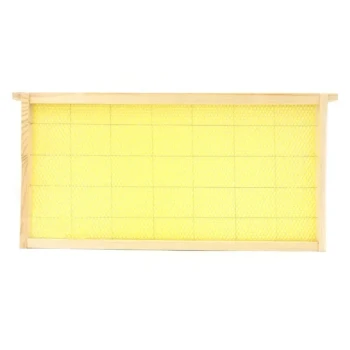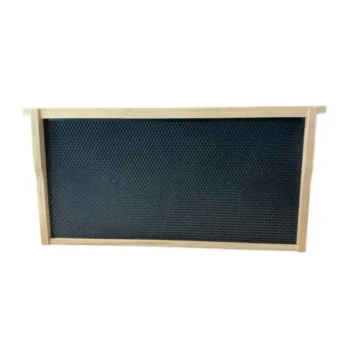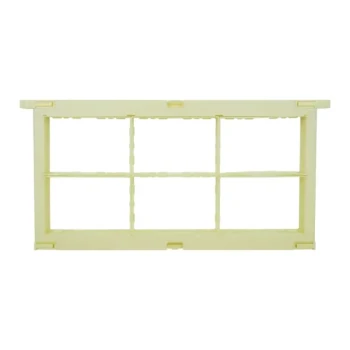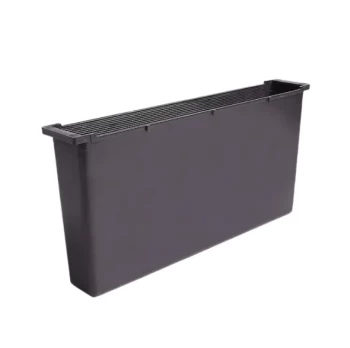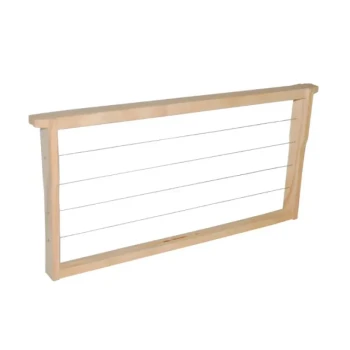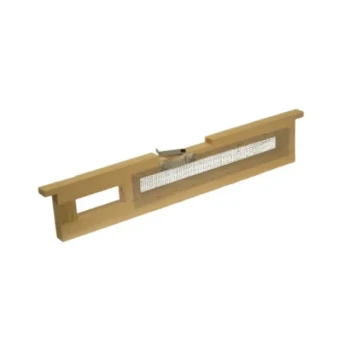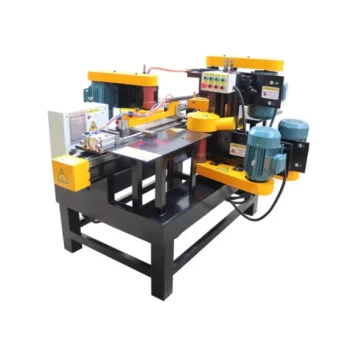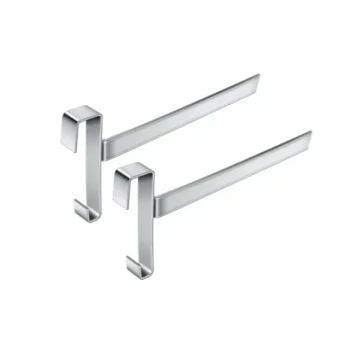When preparing honey frames for storage, allowing your bees to clean them is remarkably efficient. A strong, active colony can lick the frames almost completely dry of residual honey in just 1 to 3 days, depending on the hive's strength and the amount of honey left after extraction.
The core issue isn't if the bees can clean your frames—they are experts at it. The real consideration is how you let them do it, as the method you choose has significant implications for the health and safety of your apiary.
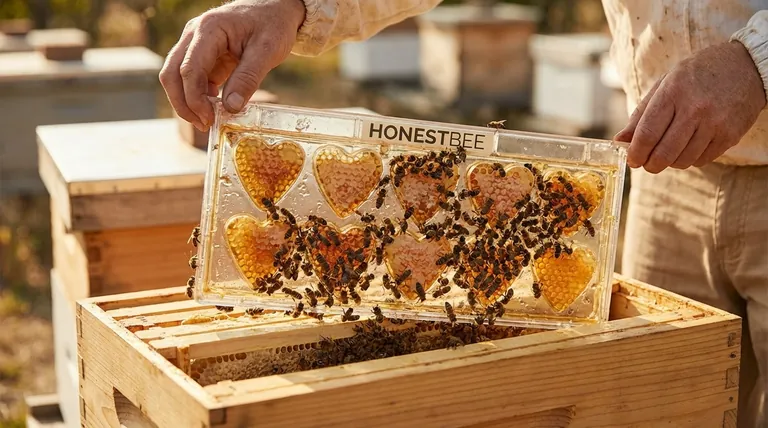
The Two Meanings of "Cleaning Frames"
The term "cleaning frames" can be confusing because it refers to two very different tasks in beekeeping—one performed by bees and one by the beekeeper.
The Bees' Role: Cleaning "Wet" Supers
After you extract honey, the frames are still sticky with a thin film of honey. These are often called "wet" supers.
Placing these frames out for the bees allows them to recover this last bit of honey. The primary goal is to make the frames dry and unappealing to pests like wax moths or ants before you store them for the winter.
The Beekeeper's Role: Manual Refurbishment
The process described in the reference material—scraping wax, prying out wedges, and cleaning grooves—is a manual task done by the beekeeper.
This deep cleaning is not for routine storage. It's done when you need to completely refurbish a frame, such as when removing old, dark comb to install a fresh sheet of foundation.
How to Let Bees Clean Frames Safely
Your method for letting bees clean the frames is critical. A wrong approach can trigger a "robbing frenzy," where bees from different hives (and even wasps) aggressively fight to get the honey, leading to bee deaths and potential disease spread.
The Safest Method: Placing Supers on the Hive
The most controlled and recommended method is to place the wet honey super directly back on top of the hive it came from.
Place it above the inner cover. The bees will travel up through the hole in the inner cover, retrieve the honey, and carry it down into their main brood nest. This contains the activity within one hive and prevents a yard-wide panic.
The Risky Method: Open-Air Placement
Some beekeepers place frames in the open, at least 50-100 yards away from their hives, for all bees to clean.
While very fast, this method is not recommended for beginners or for apiaries in close proximity to other hives. It can easily incite robbing behavior that is difficult to stop.
Understanding the Critical Trade-offs
Choosing a method involves balancing speed against the safety of your bees. The potential downsides are significant and should not be underestimated.
The Danger of a Robbing Frenzy
Open-air feeding creates intense competition. Stronger hives will dominate, and the commotion can lead them to then attack weaker hives in your apiary, looking for more honey. This can result in the complete collapse of a weaker colony.
The Potential for Disease Transmission
If you have multiple hives, open feeding creates a shared "feeding station." If one colony has a disease, like American Foulbrood (AFB), this method is a highly effective way to spread the spores to every other hive in your yard.
Making the Right Choice for Your Goal
Your objective determines the correct course of action.
- If your primary focus is safely preparing frames for winter storage: Place the wet supers back on top of a strong hive, above the inner cover, for a few days.
- If your primary focus is replacing old comb with new foundation: You must do the work of manually scraping the frames clean yourself before installing the new foundation.
- If you are managing multiple hives or are unsure of their health: Avoid open-air cleaning entirely to prevent the risk of spreading disease or inciting robbing.
Ultimately, managing your equipment wisely is as important as managing the bees themselves.
Summary Table:
| Timeframe | Key Factor | Recommended Method |
|---|---|---|
| 1-3 Days | Hive Strength & Honey Residue | Place wet supers above inner cover on original hive |
| Immediate Action Required | Disease Risk (e.g., American Foulbrood) | Avoid open-air placement; use controlled hive-top method |
| Not Applicable (Beekeeper Task) | Frame Refurbishment/Comb Replacement | Manual scraping and cleaning by beekeeper |
Upgrade Your Apiary's Efficiency and Safety with HONESTBEE
Proper frame management is crucial for hive health and honey production. As a commercial apiary or beekeeping equipment distributor, you need reliable, high-quality supplies to streamline your operations.
HONESTBEE supplies durable, precision-engineered beekeeping equipment—including easy-to-clean frames, supers, and protective gear—designed to support large-scale beekeeping success. Our wholesale-focused solutions help you maintain healthy colonies, prevent disease spread, and maximize productivity.
Ready to optimize your frame cleaning process and protect your investment?
Contact HONESTBEE today to discuss custom wholesale solutions for your apiary's unique needs.
Visual Guide
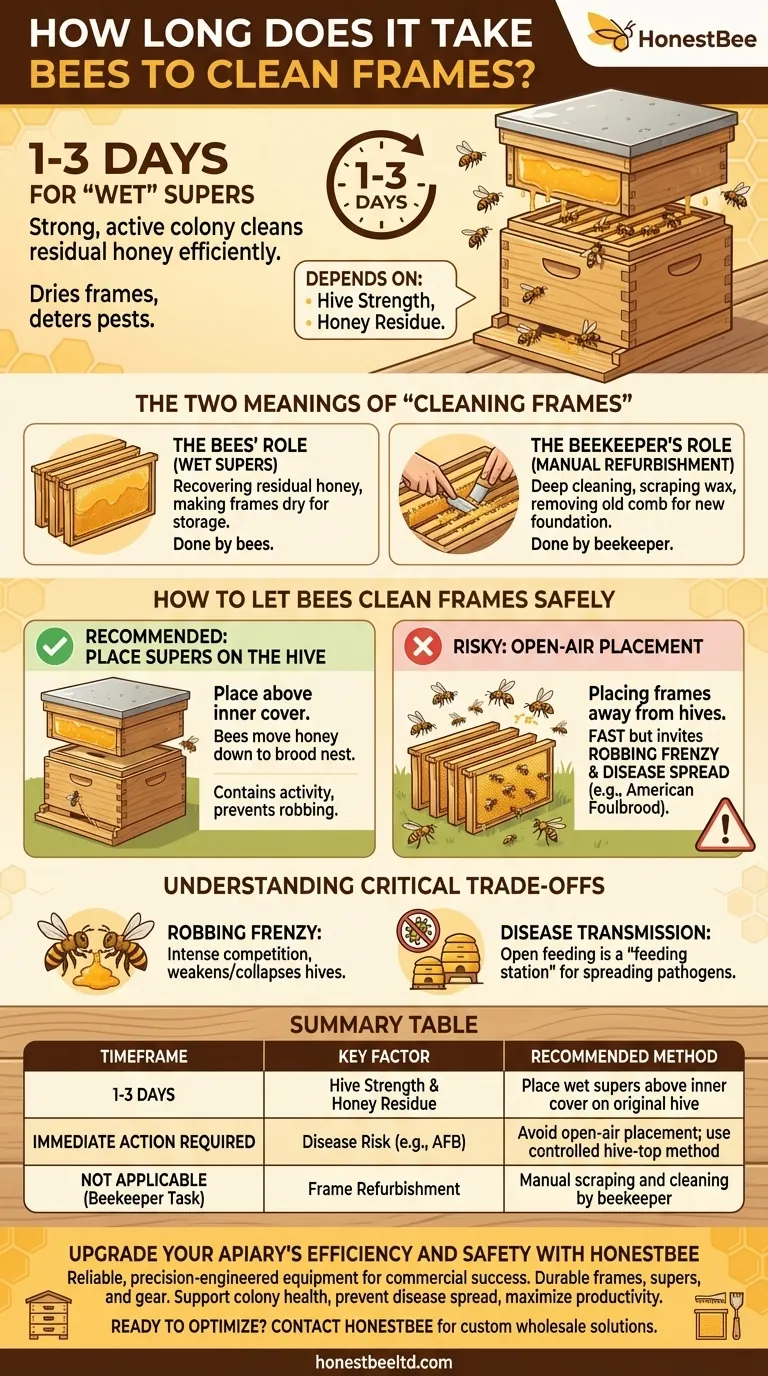
Related Products
- Heart-Shaped Comb Honey Frame and Honeycomb Cassette
- Plastic Bee Frame Beekeeping Hive Frames for Wholesale
- Plastic Honey Comb Frames Cassette Box for Honey
- Assembled Wooden Bee Frames with Beeswax Foundation Ready to Use by HONESTBEE
- Assembled Wooden Bee Frames with Plastic Foundation for Durability and Convenience by HONESTBEE
People Also Ask
- How many jars of honey from one frame? Unlock the Secrets to Maximizing Your Harvest
- What frame to use for honeycomb? Choose the Right System for Pure, Edible Comb
- How much honey can one medium frame yield? Unlock the Secrets to Maximizing Your Harvest
- How to wire a bee frame? A Step-by-Step Guide for Strong, Durable Honeycomb
- What is the bee hive shape called? The Hexagon's Role in Nature's Perfect Storage System



